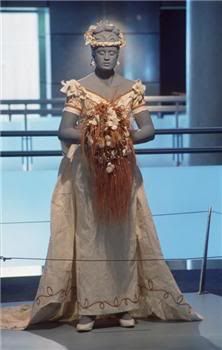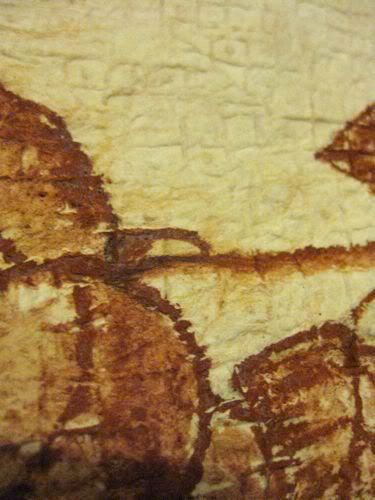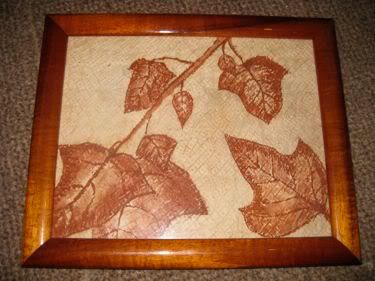Felted wool is generally considered a textile, but what about tapa, which is created through a very similar process?
Tapa, also called kapa, masi, ngatu, siapo or 'uha, and known as barkcloth to the charmingly literal European explorers who encountered it in the 17th and 18th centuries, is made from the bark of the paper mulberry tree (Broussonetia papyrifera) soaked and fermented, then beaten out into thin flat sheets and dried. The beating can be done with carved wooden paddles so that the tapa ends up with different textures and patterns to its surface.
Tapa can range in texture from cardboard stiff and rough to as soft and drapey as velvet, or fine and lacy.
After drying the tapa is cream to pale brown, and can be bleached white in the sun or dyed, painted, or printed using mineral or organic dyes.
A quick search of The Museum of New Zealand Te Papa Tongarewa's collections reveals the range of colours, designs and textures in tapa.
Prior to the European colonisation of the Pacific tapa was used for both practical and ceremonial purposes. It was worn as clothing and used as bedding, but was also traded as a ceremonial form of money, and was used to wrap remains in for burial.
There were a number of creative uses of tapa in the 19th and early 20th century as Western and Pacific cultures and technology intermingled. Missionaries taught Hawaiians to quilt with tapa when fabric wasn't available, and there are a number of Mother Hubbard dresses made out of tapa in museum collections.
Today tapa is mainly created for ceremonial and cultural purposes, though some artists have worked with it, and some fashion designers and dressmakers have used it.
Te Papa has a this lovely wedding dress made for a bride who wanted to honour her Pacific heritage:

The one piece of tapa that I have is a modern piece of Hawaiian kapa. It is quite stiff, but has a soft velvety finish to its surface. The tapa was beaten with a paddle that had a carved design of diamonds with dots in the middle. It has been painted with a design of kukui, or candlenut, leaves using a natural pigment.
The representational design signifies my link to the island of Molokai in Hawaii, and is very atypical of Hawaiian kapa, which is traditionally decorated with fine, geometric motifs.


The imprinted pattern of diamonds and dots
My tapa is kept in a koa wood frame, and the framing and glass have preserved the distinctive but not unpleasantly organic smell of the tapa, which would quickly disperse and fade if it were exposed to the air.

The smoother back of the tapa


This is absolutely fascinating! I own a 1940s "barkcloth" knitting bag that has a clearly non-traditional "Hawaiian" print on it. Would it be accurate to say that vintage bark cloth is "tapa"? Do you think it was produced using a mechanised version of the original processes described?
ReplyDeleteGreat question! I can't tell you if your bag is true tapa or not, because there was a cotton fabric popular from the 1940s-1960s (and which you can still find in fabric stores sometimes) which was meant to imitate tapa in texture. If your bag is woven, it is the barkcloth fabric. It isn't tapa unless it is pounded bark, with no weave at all.
ReplyDeleteI'll do a post about barkcloth fabric - I've got quite a few examples in my collection thanks to my grandmother!
Very cool and your piece of tapa is *beautiful*!
ReplyDeleteIs this a new blog of yours? Fascinating! I guess I'll be glued to this one as well;)
ReplyDeleteHi,Thanks for this good information.Regards from non woven bag =)
ReplyDeleteHi,Thanks for this good information.Regards from non woven bag =)
ReplyDelete